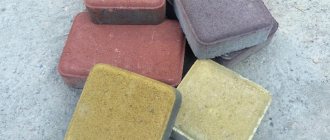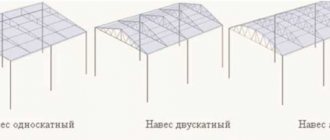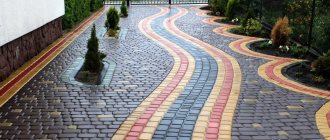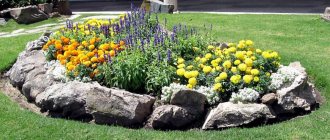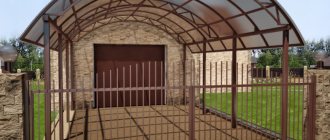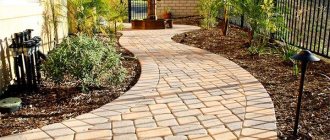You can beautifully decorate your private home area by using one of the widespread types of finishing materials, which is paving slabs. This material has earned popularity due to its spectacular appearance, strength characteristics, and ease of maintenance. The coating should be laid according to technology, using suitable tools. Then the service life of the tiles will be as long as possible.
Suburban areas are increasingly being landscaped with paving stones, honeycombs or other types of paving materials. When partially, and when the owners of the household plan to update all the paving slabs so that the landscape design looks fresh. For dachas, this option is the most optimal. You can lay out paths, driveways to garages, and improve the recreation area.
The modern market offers consumers a wide selection of tiles, of various shapes, types, sizes, to create individual design styles in areas. Manufacturers produce products with different color textures and geometric shapes. The huge assortment makes you wonder which paving slabs to choose. Being one of the central design elements, it must be combined with the overall architectural ensemble and create comfortable conditions for movement.
Garden paving materials
Today, the choice of materials for garden paving is very diverse. Paving with small units, such as bricks, tiles, blocks, attracts the eye with a rich variety of textures, gives many options for laying, and allows you to lay out paths of the most bizarre shapes. However, garden paving with small units is higher in cost of work than laying with large slabs.
Tile
The tiles are ideal for landscape design of fancy paths and interesting mosaic compositions. There are a lot of ways to lay small forms for the garden path network, and often beautifully laid out tiles can successfully highlight the junctions of garden paths.
Concrete blocks, natural stone or brick
Clay, sand-cement and silicate bricks are more often used in the construction of stairs, elevations and walls, while road clinker and concrete slabs find a variety of uses for laying paths, alleys, paths and courtyards. Based on the type of brick binding, a distinction is made between spoon binding (based on the type of wall masonry), wicker binding (checkered), herringbone and tiled.
Facing bricks are usually thicker than masonry bricks. Road clinker has a slightly rough structure, it is noticeably thinner than all the others, its height is only 40 mm. Granite paving stones look very attractive in the garden with various circular motifs and geometric compositions. Combinations of different materials are possible to create mosaic patterns.
Some paving elements can be made with large stone slabs or concrete blocks. Concrete blocks come in a wide variety of shapes, sizes and textures. Among garden paths made from large blocks, spaced paths look most advantageous. Concrete blocks come in a wide variety of shapes and shades, while brick often has specific dimensions, which range from 222 - 230 mm in length, 106 - 112 mm in width and 70 - 76 mm in height.
If you decide to choose natural stone for paving, you should take a close look at the shade of the soil in the garden and select a stone in the appropriate color palette.
Gravel or crushed stone
Garden paving can be made of gravel or crushed stone. Gravel combines well with other materials. It is poured between stones and slabs. To prevent gravel paths from crumbling, curbs are installed, and the gravel itself is compacted.
Smooth concrete slabs
Smooth concrete slabs can be used for paving outdoor terraces; it will be more convenient to place garden furniture on them.
Dumps
Bulk materials (gravel, crushed stone, brick chips, crushed bark, etc.) are the simplest coating option. They are used to decorate pedestrian paths, both in the front part of the garden and in secondary ones.
To create the main paths, inorganic fills are most often used - gravel, pebbles, crushed stone (stone chips), sand.
Expanded clay, due to its unassuming “appearance” and literal weightlessness (easily washed off with water), is used more for drainage rather than for decorative purposes, however, if you show imagination, it can contribute to creating the image of the garden.
Inorganic fills are good because they have a long service life, are not blown by the wind or washed away by rain, and do not in any way affect the composition of the soil. However, they also have their drawbacks - it is difficult to remove small debris from such coatings.
The size of stones used as fill varies in the range from 2 to 70 mm
The basis of the path, as a rule, is a drainage cushion made of simple crushed stone (5–10 cm), geotextile laid on it and a 5-centimeter layer of compacted sand. On top there is a backfill of crumbs or gravel with a thickness of 3 to 7 cm. An important detail of the bulk path is the curb, which will give it a neat, finished look.
Read more in the material “My gold placers!”
2
Paths and platforms
Regardless of the size of your property, which we will call a garden, regardless of your lifestyle and any high styles reflected in the design of your home and garden structures, there are things that will always be “down to earth” for you and, what’s more, you every you will use them every day. These are paths, various stairs and steps, as well as the paved surface of the patio.
Despite all the aesthetic importance of this topic, the main questions will not be abstract, but purely functional, where it is not so important why you go to the gazebo, pool, summer kitchen, but specifically why you go there. It is known that so-called “hard” landscape materials, such as clay bricks, concrete or paving slabs, ceramic tiles, wood and stone, are most often used for patios, stairs, and garden paths. However, if you allow grass to grow between the stone slabs, or even plant it on purpose, then the grass will also become a landscape material. And here it is difficult to say whether it is functional or just growing “for beauty.” Moreover, the changing seasons constantly transform both the appearance of the garden and, against its background, the “sounding” of paved and unpaved surfaces, stone and wood, which is especially significant in landscape architecture. Therefore, when starting to plan or redevelop a plot of land that you own, you must first come up with and then bring the idea to your landscape architect. The architect will help you implement the plan for all future changes in the garden landscape in the most efficient manner, taking into account what may already have been built, laid out and planted.
The tracks will be of double interest. In addition to their practical purpose, they create convenient and quick access to any corner of the garden. Paths also play a purely aesthetic role. They create perspective, unfold the panorama and enclose both the visual perception of the entire garden as a whole and its individual parts.
The patio, in turn, belongs more to the house than to the garden. Without in any way narrowing the space of the garden, it can significantly expand the space of a residential building. Historically, the courtyard was formed by the merger of a large paved utility yard that surrounded the landowner's estate with a veranda or porch, where it was customary to relax and drink tea.
Therefore, many courtyards are still fenced with small walls, have summer kitchens, benches, tables, and their design uses various types of canopies, including pergolas. However, patios do not necessarily have to be adjacent to the wall of the house, and they can be located at a distance, thereby justifying the original meaning of the Spanish word “patio” - “open space”. But even if the courtyard is directly adjacent to the main entrance, they still try to somehow bring it closer to nature - they make flower beds, provide decorative ponds, because nothing but a courtyard can unite the garden and the house into a single space.
The most common route for a garden path is, first of all, the path from the gate to the house. However, it is not always worth laying it strictly in a straight line through the front garden. Maybe it’s better to just move the gate or make the path go around a tree or some beautiful bush? How much do you need a path from the house to the parking space, from the kitchen to the patio or to the garden? Will there be any steps along the way? Do you want to add more space to your home by adding a patio?
Washed concrete
For most of us, concrete is something gray and boring. It's hard to believe that a product made of cement and sand can decorate a summer cottage.
To transform concrete from a gray, faceless mass into an original design material, it is enough to use a filler - gravel, crushed stone or marble chips with a diameter of about 5-10 mm. It would seem nothing complicated. But if you simply mix small pebbles into wet cement, they will drown in it. The surface of the product will take on a lumpy, sloppy appearance, so it definitely won’t be a decoration.
To solve this problem, concrete set retarders are used. It is applied to the surface of the product, and after the base mass has hardened (usually this takes about 24 hours), the top layer of cement is washed off with a stream of water under pressure. As a result, the submerged aggregate is exposed and the gray concrete literally turns to stone.
Paving tiles are often made from washed concrete, and without false modesty we can say that if installed correctly, they will last for decades.
“Stone” concrete sets quite quickly - in about 24 hours. But the product can be used only after complete hardening - after 3-4 weeks
Read more in the material “Both washing and rolling”
4
Preparing for work
If your home has just been rebuilt, get rid of excess construction debris before laying out walkways, steps, or paving patios. It may be necessary to carry out excavation work, such as removing or moving boulders, leveling the ground. These works can be carried out simultaneously with clearing the area. Whatever material you use, you will need a foundation for paths and other structures. Also, it is necessary to take care of underground work (drainage, storm drainage, irrigation system and lighting system). You should not start work related to the construction of garden paths and platforms if you are not sure whether one of the communications will pass in this place.
Foundation or foundation
In this type of construction work, a solid foundation is important. Depending on the soil and load situation, a decision is made on the construction of an appropriate foundation. If you have a sandy path in the far corner of the garden, then a ballast layer of sand will work well as a base. For a car entrance under a hard surface, a concrete foundation is most often recommended; for a gravel entrance, a thick sand and gravel cushion is made. If the garden has a complex soil structure, if your land is located on a slope, it is important that neither paths, nor steps, nor the patio itself “float” under your feet.
Purpose
Paths, steps, and a patio are both stationary elements of garden architecture and part of the landscape. Despite their functional purpose, paths and other structures emphasize the beauty of the garden: with their help you can create “green motifs”. Therefore, think about everything at the landscape design stage.
Patios
Although patios are usually part of a home's design, many people add them on later. The appearance of your home and the surrounding garden will tell you where and from what materials to build a patio. Of course, take your own needs into account. Perhaps you want to create a “patio-living room” right outside for entertaining guests in good weather. Or maybe you need a secluded corner, away from noisy household members. Or do you like to sunbathe so that your little son or daughter is riding a tricycle next to you and playing with dolls?
Paths, paths and driveways
You will probably want to lay a path or path from the garage to the house, and from the gate to the house too. You will need paths, large and small, leading to outbuildings, to a pool or pond, to a vegetable garden, to a playground. In large garden spaces, paths form the landscape and highlight separate zones. They border trimmed lawns and flower beds. Unless your garage is located on the edge of your property, you will need a driveway. You should have enough space to open the car doors, and it is advisable to even have a turning circle. Perhaps you will allocate part of the space in front of the house for this. If space allows, additional parking spaces can be added.
Steps combined with paving
Where the ground slopes, steps or a ramp are necessary. Steps and stairs lead to the main entrance, replacing paths on the hilly part of the garden. A staircase in the garden will not only ennoble the hill, but will also encourage you to climb higher to survey the surroundings.
Location and markings
The choice of location for a patio depends on the role you assign to it: access to it from the house should be convenient, the view should be beautiful. Paths and paths, in turn, are the connecting link in the garden, and steps are the result of uneven terrain or the ideas of you or your architect. Because all this is related to the size of the garden and its topography. Try to imagine how it all might look when finished: wander around the garden, noting sunny and shady places, the wind rose, and observe how the garden changes at different times of the day and even with the changing seasons. Consider all options.
When determining a location for a patio, consider where the best view will be, but choose a location that is fairly secluded. The patio located along the living room can become an extension of it in the warm season: the patio near the bedroom will serve as a corner for privacy, especially if it is fenced off. If your house has a rectangular plan, the ideal solution would be a courtyard stretching along one side of the house, with several exits to it. However, you may want to have several of these scattered courtyards. Here the final word is yours. If your home and patio are on different levels, steps will be required. Instead of a path going up a hill, you might want to build a staircase that can be level or curve around something like a paved path. The steps should be proportionate to the width and steepness of the rise: however, in the garden it is better to have wide, frequent, non-steep steps: because a steep narrow rise can pretty much spoil your walk in the garden, and in wet weather or in the evening such stairs are simply unsafe.
Selection of materials for garden paving
There is a wide selection of materials for laying steps, paths, and patios: these include heavy concrete slabs, round sections of trees, ordinary bricks, blocks, gravel screenings, and even old waste sleepers. Some materials are more durable, some less so, and each has its own “face”. Sometimes, for aesthetic purposes or for convenience, materials are combined. For example, a garden path, lined with wooden round timber or asbestos-cement tiles, ends at the foot of a paved courtyard on an elevation: several steps, lined with road bricks, lead up.
The cobblestone street becomes a continuation of the monumental concrete main staircase. A gravel path leads from the slate-paved patio to the wooden deck. However, you should not mix too many materials, as the effect may be unpredictable. The choice of materials is a matter of personal taste, although, of course, it is worth taking into account already erected garden buildings. You should especially take into account the material from which the house itself is built - it sets the tone for all the buildings in the garden.
The choice of landscape materials for laying out garden paths is extensive. There are likely several specific materials that are suitable for your garden. Weigh the pros and cons, take into account the price, the safety factor, the cost of laying the material, and decide. Paths leading to the patio should serve their purpose. Imagine that your garden is a kind of living room. Instead of carpets or parquet, landscape materials are used on the floor: grass, gravel, road bricks, cobblestones or tiles, which, by the way, are also acceptable for home flooring. If in the house you solve the issue of color with the help of paint, wallpaper and fabrics, in the garden this will be done by flowers, trees and landscaping materials. Your choice will affect the overall appearance of your garden. Decide what you prefer - a riot of colors or calm shades, whether your patio will become a secluded corner for reflection or will be “wide open”, without wall barriers, without pergolas entwined with plants, with a path that adapts directly to its steps. You may want to use paths to divide the garden into separate “rooms”, so that each has its own personality and motif. And the tracks themselves may be different. But do not forget about harmony, beauty and proportionality. After all, even behind the seemingly wild garden, with its paths of rough gravel and heavy benches, there is the work of an architect and an artist.
Classic concrete path
Monolithic concrete covering is the most reliable and relatively inexpensive option. If you follow the technology when pouring, the structure will last at least 30 years. The main disadvantages are the labor intensity and length of the process, because the concrete mixture hardens within 4 weeks. During the hardening period, the path cannot be used. Therefore, do not rush to plant flowers near the future path, where you will have to arrange a temporary passage.
To pour concrete paths with your own hands, you need to prepare the base, as described in the previous section. Then proceed in the following order:
- Install curbs or assemble wooden formwork for laying concrete.
- Prepare the tools - a building level, a trowel and a rule made according to the width of the monolith.
- Tie a mesh of reinforcement Ø8-12 mm with cell dimensions 150 x 150 mm and install it on top of the crushed stone bedding, using stands 3-5 cm high.
- Mix 1 part of cement grade 400 with 2.5 parts of sand and 4.2 parts of crushed stone with a particle size of up to 20 mm. After mixing the mixture with water, you get concrete M 200.
- Place the mortar in the formwork to a height of 12-15 cm, leveling it using the rule. The task is to make a flat surface with a slight slope on one side, ensuring the drainage of water from precipitation.
- Divide the reinforced concrete monolith into slabs using expansion joints at intervals of 2-2.5 m, installing transverse boards.
- Wait 7 days and dismantle the formwork. Final hardening will occur after 28 days.
You can beautifully design a concrete path at the pouring stage, using special plastic molds that imitate natural stone. The decoration is simple: a form (preferably several) is immersed in fresh concrete and pulled out after initial setting. In order not to buy ready-made frames, savvy craftsmen have adapted to making homemade items from metal; the technology is shown in the video:
Types of gardens
The type of garden with its individual features also determines the choice of design lines. The classic type of garden is symmetry, regularity of forms. A “wild” garden is simplicity, naturalness, and seeming optionality in lines and shapes.
- A classic garden consists of mostly straight lines, although circular paths are also acceptable. These are grand staircases, many courtyards and deck-terraces. Solidity is felt in everything: in the trees and bushes, in the wide paths. A classical garden is primarily about symmetry and proportionality. Steps and stairs are made of brick, asbestos-cement slabs or timber: often there are parapets on the sides of the stairs, and platforms are decorated with columns.
- A “wild” garden is the complete opposite of a classic one. Purely “rustic” materials are used here, the planning lines are random, as if in imitation of nature. Paved paths are deliberately overgrown with grass, often into the ground, as wide as a step, with stones or tiles of irregular shape simply buried. The choice of materials here is rustic and simple. Paths sprinkled with gravel, laid staggered with stones or tiles of irregular shape. All these are characteristic features of a wild garden. The steps are usually stone. If brick or tile is used, then in a deliberately rough, careless form: greenery breaks through at the joints here and there. And if the garden is wild, it is difficult to build any harmonious system. Therefore, the garden often includes individual classical features. This is especially common on large properties that can easily be subdivided into individual plots. But even in a small garden, you can achieve a similar effect by running a winding path through a classically built area leading to an unpretentious patio.
Safety precautions when working
When working with cement, one of the most harmful factors is dust. Therefore, before preparing the mixture, you should wear protective clothing: gloves, a respirator or a protective mask.
But it is also important to ensure that diluted dye or plasticizer does not come into contact with your skin or eyes.
You need to be careful when the concrete mixer is working. You should check the integrity of the wires and sockets, do not test the quality of the concrete and do not correct problems when the equipment is plugged in.
Although the process of preparing paving slabs is labor-intensive, the result is worth it. In a month, garden paths laid out with a beautiful exclusive coating can turn your garden plot into a small masterpiece of landscape design.
Motives
Landscape architects often try to adhere to common themes in their work. Therefore, it is important that both paths and open areas or courtyards meet the same requirements. Style is also directly related to the motive, but more often it implies subordination to the architectural canons in which the house is designed. For example, a cobblestone street will look out of place next to a house in the Art Nouveau style, and a marble courtyard is too pompous for a brick cottage. If the theme of your garden is based on color, its shades will be used (for example, for raspberry - from light cherry to beige, for blue - from lilac to purple). You can also combine individual colors. For example, if your living room is decorated in blues and yellows, it's natural to expect the same color motif on the adjacent patio, with a yellow-orange path stretching beyond it, running into the distance, into the depths of the garden. And in the fall, nature itself will add yellow and orange tones. And the sky above us is blue! It is not necessary to achieve color harmony in landscape materials: it is important that they are combined with planted flowers and green spaces. There are many options here: for example, black slate looks very impressive against the background of yellow and blue flowers, and red brick emphasizes the purity of white. The dominant motif can subjugate both the entire territory of the garden and certain sections of it. For example, roses are often planted separately, with border paths drawn between them.
Types of garden path coatings
Paths, steps and courtyards have one thing in common - it is a hard and reliable coating in any weather and in all seasons. However, choosing a coating is not such a simple matter. It depends on the layout of the garden, its style concept and the direct purpose of each specific piece of land. For example, the path leading to the main entrance should be covered with wear-resistant, rough material that is not afraid of heat, frost, or dampness; it should be illuminated at night and, if possible, made straight. On the contrary, it is hardly wise to spend expensive material on a walking path winding through the garden, since it is too unlikely that it will be used frequently at night or in the rain.
- Asphalt is an ideal surface for access roads. It is considered quite affordable, but is rarely used in the garden, and even less often used to cover patios. Like tarmak (tar concrete), it is most often laid hot and rolled with road rollers, for which a team of road workers is invited. However, there are several types of cold-laid asphalt; even a non-specialist can lay it, but this coating is less durable than well-rolled hot asphalt.
- Shredded bark. In some countries, this material is not as exotic as it might seem at first glance, but it is used exclusively for covering children's playgrounds and only in rare cases are paths sprinkled with tree bark. The main disadvantage of bark is its lightness. Small crumbs are easily blown by the wind, and they themselves scatter underfoot. In appearance, this material is somewhat reminiscent of gravel, but it rarely has a place in classically designed gardens.
Road brick (clinker)
Paving paths and courtyards with clay bricks and road clinker of various types, shapes and sizes is used almost everywhere. This tradition is at least four thousand years old, and there are still virtually no restrictions on the use of such materials in gardens of all styles and any landscape solutions. Bricks are made either from clay or from sand-cement, and they are usually less thick than concrete slabs, but they are made in a wider range of colors, which allows them to be laid out in mosaics or played with in various ways.
Cobblestones, paving stones and concrete tiles
Today, cobblestone streets in the minds of many people are more associated with rattling carts and carriages, and if with cars, then with a certain amount of sympathy for “self-propelled carriages.” But even modern car tires and equally modern shoes, as well as the legs of tables and chairs in the patio, will not be completely delighted with communicating with round stones, which are no longer dug into the ground, but simply pressed into the cement mortar. And only somewhere in the garden, in a damp place, a path laid with cobblestones will evoke quiet nostalgia. Paving stones are much more practical, smoother, much more noble, more pleasant to walk on, but they are stunning in price! The solution may be artificial stone (concrete blocks sprinkled with stone chips) and concrete slabs imitating natural stone. They can compete with the creations of nature only in beauty, but not in durability.
Concrete
The cheapest and most unpretentious material is concrete. Maybe that's why many people avoid him. However, the combination of concrete with other materials sometimes gives a good effect, especially since it can be used in different ways for patios, stairs and all types of paths. Concrete coatings are made in two technologies - block and monolithic, solid cast. The sizes and shapes of concrete blocks are extremely varied. Everything is made from concrete, from slabs (round, rectangular, polygonal) to various elements of curbs, curbs and blind areas. The slabs are laid either end-to-end, for example, in a checkerboard pattern, or “staggered”. Hollow concrete blocks, which are often used as walls, are often suitable for laying out flights of stairs. For the same purpose, ready-made steps are also used. Monolithic concrete causes even more conflicting feelings among many. Concrete even a few meters of a garden path - this alone, not counting the preparation of the formwork, requires a lot of work. And the very sight of a gray concrete monolith will not inspire everyone. Although the concrete driveway with paving stones looks very presentable. Plus, nothing fits under tiles as perfectly as concrete.
Gravel and crushed stone
Gravel is a frequent guest on garden paths and patios; it is practically a regular presence here (although it is not always possible to recognize it, but more on that below). Because of its cheapness and almost universal availability, gravel will compete well with all other materials, although it can be combined with some - it is poured between stones and slabs. He has a difficult relationship with plants, but they sprinkle them into flower beds to drown out the weeds. Added to the ground during digging, it also improves the structure of the soil. Before you sprinkle the paths with gravel, you need to prepare the soil for it, that is, compact the soil underneath it. In addition, the paths must have fairly high borders, otherwise the gravel will fly out from under your feet onto the lawns. Quarry gravel is often used to fill road cushions when building new roads, but finely crushed crushed stone is also often called gravel. For concrete work, you usually take crushed stone of a fraction of 5-20 mm, but for sprinkling paths you need smaller, pea-sized gravel screenings.
Grass
Grass should not be treated with disdain: some varieties of lawn grass have remarkable tenacity and actively resist trampling. But the grass needs to be looked after, trimmed, watered, fed, and then it will be pleasant to walk along such “overgrown” paths. As for patios, here grass can be a temporary solution, albeit temporary, until you decide what exactly to pave the patio with. The most permanent, almost permanent solution may be to plant grass between the slabs lying “staggered”, or on those paths where the slabs are laid according to the principle “from hummock to hummock”.
In our Portfolio “Townhouse Garden” you can see more photos of garden paving using lawn grass.
Stone and slate
For laying “from hummock to hummock”, flattened boulders or stones with at least one flattened surface are suitable. However, they look just as good apart, especially in patios designed in a traditional rural style. Real masonry stone, quarried and properly cut, is rare due to its considerable price. But there is no replacement for him when there is money. This stone makes excellent steps, and a wonderful blind area can be laid under the walls of the house. Another type of stone is slate. It can be either irregularly shaped or rectangular (processed). Naturally, untreated slate is better suited for coverings “staggered” and “from hummock to hummock”. An imitation of this layered stone can be artificial slate; these black-gray tiles are sometimes on sale. In general, artificial stone is increasingly replacing natural stone (it is cast and pressed into forms of more or less regular configuration). This stone is very popular in garden construction because it is both beautiful and cheap.
Decking, soundboard, wooden flooring
An excellent solution for arranging areas, paths or terraces is decking or wooden flooring.
Types of paving slabs with their pros and cons
A large choice is always associated with clarifying the positive and negative aspects associated with the material that is purchased. Especially if it is taken for landscaping. It is important that it meets all requirements and is designed for a long period of operation. In the case of outdoor tiles, this period involves many years.
The production of paving slabs and paving stones is carried out in accordance with modern technologies. There is a difference in technological processes, which makes it possible to produce slab products of 3 types:
- vibrocast;
- vibration-pressed;
- polymer sand.
Each has its own advantages and disadvantages. The difference lies not only in the production method. The difference is visible in the cost and the order of installation. The unifying factor is the lack of high complexity in the work. It’s easy to lay any tile yourself, following the technological steps. Knowing the pros and cons of products, you can reduce the time spent searching for a suitable product and quickly find a good alternative to previously used materials.
Let's take a closer look at the above types
Vibro-cast tiles are accordingly produced by vibration casting and represent the simplest, cheapest option. The solution is poured into plastic molds. Then they are placed on a special vibrating table. Vibration gives compaction to the mortar mixture. As a result, the form with the set composition is dried in a special chamber where a high temperature is maintained.
The main advantages of this option are:
- The presence of a smooth glossy surface on the front side.
- Possibility to use any pigments. Any colors can be chosen. Enough to add dye to the mixture.
- Minimum production costs. The whole process is not long, and it requires few resources. Hence the cheapness of the material.
The material has significant disadvantages:
- low strength;
- poor tolerance to low temperatures;
- short operating time.
The main application of this type was found in private housing construction. Wide paving slabs 500x500x50 are often used for laying out adjacent areas. For garden paths, choose a smaller size. Vibro-cast paving slabs 300x300x30 are ideal here
The next vibration-pressed variety is more durable. A different production technology is used. Forms with the mortar mixture are placed under a vibropress. Vibration and pressure are involved in the compaction process.
Pressed tiles have many advantages. Let's list some of them:
- resistance to mechanical stress;
- automated production;
- long period of use;
- frost resistance, good tolerance to temperature changes.
There are also disadvantages here:
- firstly, a small set of shades;
- secondly, there is not a wide variety of forms.
Driveways are laid with vibropressed tiles. The coating can easily withstand the weight of a car.
Modern polymer-sand paving slabs come in different sizes, but the most popular is 300x300x30. The production here is different, as are the elements to make the product. There is no cement. The base is sand, and the role of the binder is given to polymeric materials.
The manufacturing technology also includes molding. The process involves sifting sand, calcination, heating to 250o, moving it into molds and sending it under the press. The result is slabs with many advantages:
- their strength is an order of magnitude higher than previous types;
- the moisture resistance present prevents the coating from cracking in winter;
- frost resistance makes the material available for any climatic zones with a long service life;
- the product is light in weight and easy to install;
- You can choose different shades and shapes.
The disadvantage is the expansion of the tiles in hot weather. To avoid this disadvantage, creating gaps of at least 3 mm helps.
For a wide approach to the house, it is also possible to use granite measuring 300x200x40 mm
Curbs and curbs
For most patios, especially those with gravel, edging is an absolute must. The same applies to driveways, but this is to ensure that a car, having unsuccessfully driven onto the edge of a paved surface, does not damage the pavement. But a border can also have independent value if it is beautifully selected and installed correctly, while it will reliably keep blocks and slabs from spreading, and also serve as a kind of container for bulk materials.
When laying a special curb or edge stone, you don’t have to get too creative, but when paving with brick or clinker, the curb is often made in the form of a curb made of bricks placed obliquely at the ends. Such a border does not prevent rainwater from flowing away. But the Victorian style requires installing the slabs strictly on edge. The general rule is to make the border from the same stone as the surface, although options and combinations of several materials are always possible.
Tile paving technologies
After installing the curb stone and hardening the cement mortar, you can move on to the most important stage of paving - laying the paving slab elements. The basic rules of self-paving technology are as follows:
- laying is most often carried out on a surface represented by freshly applied gritsovka - a mixture based on one part of cement and six parts of sifted sand;
- the height of the prancing layer is selected individually in each specific case, but its surface must be carefully leveled;
- paving along the border is carried out in the direction from the edge of the path, and the row adjacent to the curb stones is cut using a grinder;
- checking the laid surface for horizontalness is carried out with a plank, a wooden block or a traditional stretched cord.
It is important to remember that during the paving process, the elements of paving slabs are leveled and also adjusted to each other using a mallet with a rubber pad.
Laying tiles in layers
To prevent damage to the surface of the fragile vibro-cast tiles, blows with a mallet are applied only to the wooden block placed on top.
The process of dry laying is completed by pouring water onto the paved area, filling the gaps between the tile elements with a standard pliers and washing off any remaining dirt with a fairly powerful water jet from a hose.
The tiles can be laid on different surfaces, but it is best to choose a sand substrate. Technology for laying paving slabs on sand - see detailed instructions.
Options and costs for laying paving slabs are described in this topic.
